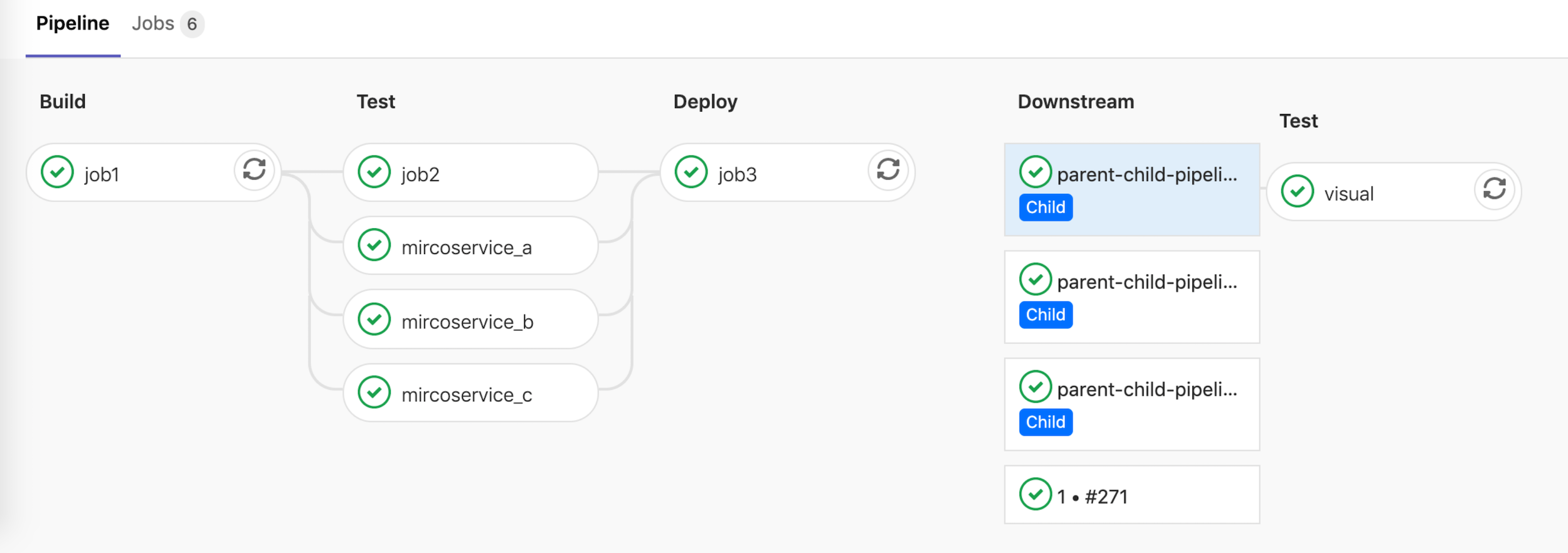Parent-child pipelines
Introduced in GitLab Starter 12.7.
As pipelines grow more complex, a few related problems start to emerge:
- The staged structure, where all steps in a stage must be completed before the first job in next stage begins, causes arbitrary waits, slowing things down.
- Configuration for the single global pipeline becomes very long and complicated, making it hard to manage.
- Imports with
includeincrease the complexity of the configuration, and create the potential for namespace collisions where jobs are unintentionally duplicated. - Pipeline UX can become unwieldy with so many jobs and stages to work with.
Additionally, sometimes the behavior of a pipeline needs to be more dynamic. The ability to choose to start sub-pipelines (or not) is a powerful ability, especially if the YAML is dynamically generated.
Similarly to multi-project pipelines, a pipeline can trigger a set of concurrently running child pipelines, but within the same project:
- Child pipelines still execute each of their jobs according to a stage sequence, but would be free to continue forward through their stages without waiting for unrelated jobs in the parent pipeline to finish.
- The configuration is split up into smaller child pipeline configurations, which are easier to understand. This reduces the cognitive load to understand the overall configuration.
- Imports are done at the child pipeline level, reducing the likelihood of collisions.
- Each pipeline has only the steps relevant steps, making it easier to understand what's going on.
Child pipelines work well with other GitLab CI features:
- Use
only: changesto trigger pipelines only when certain files change. This is useful for monorepos, for example. - Since the parent pipeline in
.gitlab-ci.ymland the child pipeline run as normal pipelines, they can have their own behaviors and sequencing in relation to triggers.
All of this will work with include: feature so you can compose
the child pipeline configuration.
Examples
The simplest case is triggering a child pipeline using a local YAML file to define the pipeline configuration. In this case, the parent pipeline will trigger the child pipeline, and continue without waiting:
microservice_a:
trigger:
include: path/to/microservice_a.ymlYou can include multiple files when composing a child pipeline:
microservice_a:
trigger:
include:
- local: path/to/microservice_a.yml
- template: SAST.gitlab-ci.ymlNOTE: Note:
The max number of entries that are accepted for trigger:include: is three.
Similar to multi-project pipelines, we can set the parent pipeline to depend on the status of the child pipeline upon completion:
microservice_a:
trigger:
include:
- local: path/to/microservice_a.yml
- template: SAST.gitlab-ci.yml
strategy: dependLimitations
A parent pipeline can trigger many child pipelines, but a child pipeline cannot trigger further child pipelines. See the related issue for discussion on possible future improvements.
